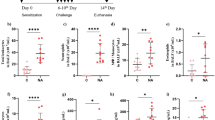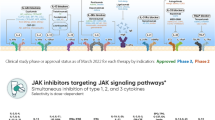Abstract
Pro-inflammatory mediators including TNF-alpha, IL-6, and nitric oxide are important for the regulation of the immune response when an infection is present, but when overproduced, it can be responsible for the development of tissue and organ injury seen in sepsis, as well as severe asthma, and autoimmune diseases such as Crohn’s disease and rheumatoid arthritis. Data from our lab to characterize the novel compound enaminone E121 have suggested that macrophages stimulated with lipopolysaccharide (LPS) release significantly decreased levels of TNF-alpha and IL-6 as measured by enzyme-linked immunosorbent assay as compared to the DMSO control group. Additionally, functional experiments in a mouse model of asthma have shown that E121 is efficacious in decreasing airway hyperresponsiveness. A new set of compounds synthesized in our lab (JODI) have an N-aryl piperazino motif incorporated on the aromatic side of the enaminone pharmacophore. It was hypothesized that this would enhance their immunosuppressive activity as anti-inflammatory agents by also acting as a chemokine receptor antagonist. Our studies suggest that JODI appears to suppress TNF-alpha and IL-6 in a dose-dependent manner. The JODI compounds were also more effective in reducing TNF-alpha after LPS stimulation when compared to dexamethasone. Lastly, studies using MCP-1 suggest that the JODI compounds, and not E121, are able to block CCR2 signaling as evidenced by decreased total ERK1/2. These studies indicate that E121 and its corresponding piperazino analogs could act as strong anti-inflammatory agents in asthma or other autoimmunities where efficacious therapeutic options are needed.






Similar content being viewed by others
References
Yang, M., R.K. Kumar, P.M. Hansbro, and P.S. Foster. 2012. Emerging roles of pulmonary macrophages in driving the development of severe asthma. Journal of Leukocyte Biology 91: 557–569.
Li, X., S. Jiang, and R.I. Tapping. 2010. Toll-like receptor signaling in cell proliferation and survival. Cytokine 49: 1–9.
Kawar, T., O. Takeuchi, T. Fujita, J. Inoue, P. Muhlradt, S. Sato, K. Hoshino, and S. Akira. 2001. Lipopolysaccharide stimulates the MyD88-independent pathway and results in activation of IFN-regulatory factor 3 and the expression of a subset of lipopolysaccharide-inducible genes. Journal of Immunology 167: 5887–5894.
DiPiro, J., R.L. Talbert, G.C. Yee, G.R. Matzke, B.G. Wells, and L.M. Posey. 2001. Pharmacotherapy: A Pathophysiologic Approach, 8th ed. New York: McGraw-Hill Education.
Singh, N., M.J. Rieder, and M.J. Tucker. 2004. Mechanisms of glucocorticoid-mediated anti-inflammatory and immunosuppressive action. Pediatric and Perinatal Drug Therapy 6: 107–115.
Mittelstadt, P.R., and J.F. Ashwell. 2001. Inhibition of AP-1 by the glucocorticoid-inducible protein GILZ. Journal of Biological Chemistry. 276: 29603–29610.
Berrebi, D., S. Bruscoli, N. Cohen, A. Foussat, G. Migliorati, L. Bouchet-Delbos, M.C. Maillot, A. Portier, J. Couderc, P. Galanaud, M. Peuchmaur, C. Riccardi, and D. Emilie. 2003. Synthesis of glucocorticoid-induced leucine zipper (GILZ) by macrophages: an anti-inflammatory and immunesuppresive mechanism shared by glucocorticoids and IL-10. Blood 101: 729–738.
Amano, Y., S.W. Lee, and A.C. Allison. 1993. Inhibition by glucocorticoids of the formation of interleukin-1 alpha, interleukin-1 beta, and interleukin 6: mediation by decreased mRNA stability. Molecular Pharmacology 43: 176–182.
Tobler, A., R. Meier, M. Seitz, B. Dewald, M. Baggiolini, and M. Fey. 1992. Glucocorticoids downregulate gene expression of GM-CSF NAP1/IL-8, and IL-6, but no M-CSF in human fibroblasts. Blood 79: 45–51.
Farrell, R.J., and D. Kelleher. 2003. Glucocorticoid resistance in inflammatory bowel disease. Journal of Endocrinology 178: 339–346.
Barnes, P.J., and I.M. Adock. 2009. Glucocorticoid resistance in inflammatory diseases. The Lancet 373: 1905–1917.
El-Hashim, A., S. Yousefi, I. Edafiogho, R. Raghupathy, M. Yousif, and H.U. Simon. 2010. Anti-inflammatory and immunosuppressive effects of the enaminone E121. European Journal of Pharmacology 632: 73–78.
El-Hashim, A., I. Edafiogho, S. Jaffal, M. Yousif, C.I. Ezeamuzie, and S. Kombian. 2011. Anti-tussive and bronchodilator mechanisms of action for the enaminone E121. Life Sciences 89: 378–387.
Xia, M., and Z. Sui. 2009. Recent developments in CCR2 antagonists. Expert Opinion on Therapeutic Patents 19(3): 295–303.
Cumming, J.G., J.F. Bower, D. Waterson, A. Faull, P. Poyser, P. Turner, B. McDermott, A.D. Campbell, J. Hudson, M. James, J. Winter, and C. Wood. 2012. The design and synthesis of novel, potent and orally bioavailable N-aryl piperazine-1-carboxamide CCR2 antagonists with very high hERG selectivity. Bioorganic Medicinal Chemistry Letters 22(12): 3895–3899.
Lukacs, N.W., A.L. Miller, and C.M. Hogaboam. 2003. Chemokine receptors in ssthma: searching for the correct immune targets. Journal of Immunology 171(1): 11–15.
Xu, W., A. Roos, N. Schlagwein, A.M. Woltman, M.R. Daha, and C. van Kooten. 2006. IL-10 producing macrophages preferentially clear early apoptotic cells. Blood 107(12).
Chang, E.Y., B. Guo, S.E. Doyle, and G. Cheng. 2007. Cutting edge: involvement of the type I IFN. Journal of Immunology 178: 6705–6709.
Saraiva M, and O’Garra A. 2010. The regulation of IL-10 production by immune cells. Nature Reviews Immunology 10(3):170–181.
Iyer, S.S., A.A. Ghaffari, and G. Cheng. 2010. Lipopolysaccharide-mediated IL-10 transcriptional regulation requires sequential induction of type I IFNs and IL-27 in macrophages. Journal of Immunology 185(11): 6599–6607.
Jimenez-Sainz, M.C., B. Fast, F. Mayor Jr., and A.M. Aragay. 2003. Signaling pathways for monocyte chemoattractant protein 1-mediated extracellular signal-regulated kinase activation. Molecular Pharmacology 64(3): 773–782.
Ashida, N., H. Arai, M. Yamasaki, and T. Kita. 2001. Distinct signalling pathways for MCP-1-dependent integrin activation and chemotaxis. Journal of Biological Chemistry 276: 16555–16560.
Author information
Authors and Affiliations
Corresponding author
Ethics declarations
Conflict of Interest
The authors declare that they have no competing interests.
Rights and permissions
About this article
Cite this article
Szollosi, D.E., Ghoneim, O.A.M., Manzoor, M.K. et al. Novel Piperazino-Enaminones Suppress Pro-Inflammatory Cytokines and Inhibit Chemokine Receptor CCR2. Inflammation 39, 2053–2061 (2016). https://doi.org/10.1007/s10753-016-0443-y
Published:
Issue Date:
DOI: https://doi.org/10.1007/s10753-016-0443-y




